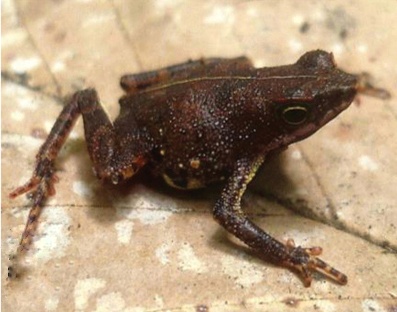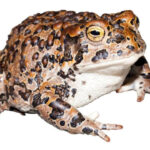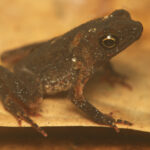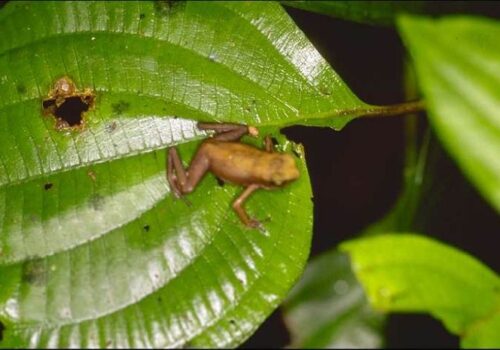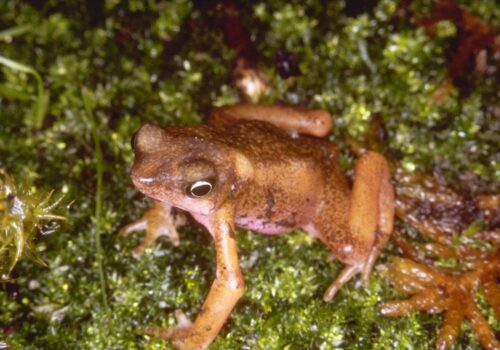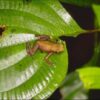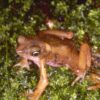Amazophrynella manaos: Unveiling the Secretive Jewel of the Amazon Rainforest Floor#
Deep within the lush, verdant embrace of the Amazon rainforest, hidden amid layers of leaf litter and moss-draped roots, lives a creature of remarkable adaptability and delicate charm—the Amazophrynella manaos. This tiny toad, often unnoticed by human eyes, embodies the subtle brilliance and intricate ecology of one of the planet’s richest environments. From its diminutive form that perfectly blends into the forest terrain to its vital ecological contributions and unique behaviors, Amazophrynella manaos captivates biologists and nature enthusiasts alike, offering invaluable insights into rainforest health and biodiversity.
Scientifically classified as Amazophrynella manaos, this species has become an intriguing focus for researchers exploring amphibian biodiversity and conservation in the South American tropics. Named after the Manaus region in Brazil, where scientists first recognized and described it, this miniature amphibian offers essential clues to understanding ecosystem dynamics, species interactions, and environmental threats that imperil the rich yet fragile Amazon biome.
Though tiny in stature—rarely exceeding two centimeters—this rainforest resident has a mighty story to tell. By delving into its taxonomy, natural habitat, fascinating physical characteristics, behavior, and critical ecological role, we can better appreciate this often-overlooked but vitally significant amphibian.
Taxonomy and Classification#
Amazophrynella manaos belongs to the family Bufonidae, known commonly as the “true toads.” Within this broad group of amphibians, which includes hundreds of species across the globe, Amazophrynella manaos resides within a specialized and relatively understudied genus—Amazophrynella. This genus presently contains numerous diminutive toads that dwell in remote French Guiana, Suriname, Brazil, and neighboring Amazonian regions.
Initially described as a unique species by scientists Rojas, Carvalho, Ávila, and Farias in a pivotal 2015 scientific paper, it garnered particular attention due to its miniature size and specialized habitat requirements. The name “manaos” celebrates Manaus city, in recognition and reverence of one of the Amazon’s primary biodiversity hubs.
The discovery of Amazophrynella manaos sparked renewed interest in the tiny amphibians inhabiting the forest floor microhabitats of the Amazon. Because of their specializations, these species potentially hold answers about evolutionary processes, environmental adaptation, and habitat fragmentation impacts on local amphibian communities.
Natural Habitat#
Geographic Range and Distribution#
Exclusively inhabiting limited regions within Brazil’s central Amazonian basin, Amazophrynella manaos prospers in isolated, heavily forested ecosystems near Manaus. Primarily documented near the Reserva Florestal Adolpho Ducke and adjacent protected reserves, it occupies specific microhabitats along the forest floor strata.
Forest Floor Specializations#
Unlike many tropical amphibians often associated with aquatic or arboreal environments, Amazophrynella manaos predominantly resides upon the moisture-rich leaf litter that carpets Amazonian forests. Within this microclimate, conditions remain humid yet stable, protecting delicate amphibians from direct sunlight and harsh fluctuations in weather.
The forest floor provides abundant hiding spots beneath fallen branches, decayed leaves, and tangled roots—a complex micro-universe teeming with small insects, arthropods, and invertebrates. Amazophrynella manaos leverages this habitat complexity to evade predators, contextually communicate, and acquire food without venturing far from protective shelters.
Due to these specialized habitat preferences, the species is vulnerable to disturbances such as deforestation, habitat fragmentation, climate change-induced drying, and invasive species encroachment, reinforcing their sensitive position in the landscape hierarchy.
Physical Characteristics#
Amazophrynella manaos is classified among the “miniature amphibians” due to its notably diminutive size. Adults rarely surpass two centimeters from snout to vent, mimicking the proportions, subtle coloration, and textures characteristic of the damp leaf litter upon which their survival depends.
Upon careful observation, delicate hues of olive green, mottled brown, and muted tan adorn their rough-textured skin. This cryptic coloration acts as an effective camouflage, shielding them from a host of potential predators, ranging from birds and reptiles to predatory arthropods that patrol the rich Amazon soil.
Despite its small stature, the Amazophrynella manaos exhibits the powerful hind legs typical of typical hoppers. This adaptation facilitates swift and agile movements, allowing for sudden leaps that surprise prey or quickly escaping predators. Additionally, specialized glands on their skin produce subtle, yet sufficient chemical deterrents against smaller predators, reinforcing their defense repertoire.
Behavior and Life Cycle#
Dietary Habits#
Amazophrynella manaos exhibits an opportunistic feeding strategy, preying on small organisms abundant within its microhabitat, including minute insects, springtails, mites, and ants. Using quick, efficient movements and precise tongue strikes, it adeptly captures prey. Each toad plays an essential role in biological control, regulating insect populations within this micro-ecosystem.
Mating and Reproduction#
Like other Amazonian toads, Amazophrynella manaos engages in intriguing mating rituals closely aligned with climatic conditions. The onset of rain showers triggers quiet yet vocal choruses, where male individuals emit characteristic calls—soft, high-pitched notes—that, while subtle to human ears, form essential threads in the acoustic tapestry that defines their habitat.
Once breeding pairs form successfully, females deposit small clutches of eggs within concealed, humid, leaf-litter shelters near temporary rain pools or saturated spots. Tadpoles hatch quickly and thrive in ephemeral aquatic microcosms formed by rainwater accumulations within tree holes, shallow depressions, or sheltered root systems. Remarkably adapted, these tadpoles rapidly develop, metamorphosing within weeks into fully terrestrial miniature toads suited for forest dependencies.
Ecological Role#
Playing dual roles as both predator and prey, Amazophrynella manaos offers crucial ecological services. By maintaining insect population equilibrium, it protects plants—from towering giants to small forest herbs—from overgrazing insects and destructive arthropods, thereby preserving overall habitat balance and health.
Yet their ecological significance extends further. As prey items to a wealth of predators within the food web, including snakes, birds, and larger amphibians, they facilitate energy transfer across various trophic levels, sustaining the biodiversity-rich communities surrounding Manaus.
Additionally, the species acts as a subtle yet essential indicator of forest ecosystem integrity. Amphibians are highly sensitive to environmental disturbances, so shifts in the Amazophrynella manaos population often signal broader ecological pressures that may threaten the entire forest web.
Threats and Conservation Status#
As a relatively newly described species, definitive data on Amazophrynella manaos’s population trends remain limited. Given its narrow geographic distribution, specialized habitat needs, and sensitivity to environmental disturbances, conservationists suggest precaution and heightened focus on preserving its microhabitats.
The threats facing this delicate forest dweller mirror broader global patterns of amphibian decline, including rampant habitat loss due to deforestation, encroachment, agriculture, urban expansion, and climate-related droughts. Pollution, invasive species competition, and fungal diseases such as chytrid fungus also pose significant threats, emphasizing the urgency of conservation attention.
Currently, their range overlaps with partially protected regions near Manaus, providing some hope for their continued existence. However, consistent monitoring, habitat protection, restoration initiatives, and public education remain essential to safeguard the long-term future of this tiny toad.
Cultural and Scientific Significance#
Though relatively new to Western science, Amazophrynella manaos shines a fresh spotlight on the unique biodiversity of Amazonian forests. Scientific studies centered upon these amphibians illuminate evolutionary dynamics that shape tropical ecosystems and provide compelling reminders about the interconnectedness within nature.
For local indigenous communities, these tiny inhabitants contribute to a broader cultural connection with nature embodied in traditional folklore, storytelling, and eco-cultural relationships—symbiotic bonds firmly rooted in deep ecological understandings and spiritual traditions.
Conclusion#
Hidden amid fallen leaves, protected by camouflage, Amazophrynella manaos lives quietly yet significantly, symbolizing the vibrant yet fragile nature of Amazon biodiversity. It invites us to appreciate the mysteries and complexities underpinning this mesmerizing ecological realm. For those captivated by nature’s wonders, this miniature toad offers endless fascination and an urgent plea for preservation—an urging call to action encouraging everyone to support conservation initiatives, champion sustainable living, and protect irreplaceable treasures hidden within the Amazon rainforest floor.


